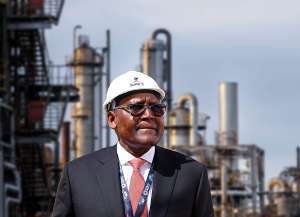According to a new report from the World Bank Group, investing an average of 1.4% of GDP annually could reduce emissions in developing countries by as much as 70% by 2050 and boost resilience.
The analysis, Climate and Development: An Agenda for Action, compiles and harmonises results from the Bank Group’s Country Climate and Development Reports, covering over 20 countries that account for 34% of the world’s greenhouse gas (GHG) emissions. It shows that Investment needs are markedly higher in lower-income countries which are more vulnerable to climate risk, often exceeding 5% of GDP. The report noted that these countries will need increased amounts of concessional finance and grants to manage climate change impacts and develop along a low-carbon path.
The report draws from the richness of the individual country reports and highlights lessons for countries on integrating climate and development objectives. It found that this approach to climate action can help them manage the negative impacts of climate change, while generating positive impacts on GDP and economic growth, and delivering critical development outcomes such as reducing poverty.
Key Conditions for Success
The key conditions for success, according to the report include, impactful reforms, improved allocation of public resources, higher mobilization of private capital, and significant financial support from the international community.
“Achieving climate and development objectives must go hand in hand. Climate action is a key global public good, requiring significant new financing from the global community and mechanisms for inflows.
“Well prioritised and sequenced climate actions, strong participation of the private sector, substantial international support and a just transition are critical components for impact.”
World Bank Group
Increasing Climate Action
The report further noted that while all countries have to increase their climate action, high income countries with their greater responsibility for emissions need to lead the way with deeper and more rapid decarbonization, as well as increased financial support to lower income countries.
Major current and future emitters in the developing world also have a key role to play for the world to achieve the goals of the Paris Agreement.
The report also examined the technologies and innovations needed for lower carbon intensity production of electricity, steel, cement, and manufacturing, and how the world will build green and efficient supply chains for a sustainable future.
The Country Climate and Development Reports combine the best available data, models, and tools and aim to provide policymakers with immediate and actionable recommendations to guide climate and development decisions today. They are a core element of the World Bank Group’s Climate Change Action Plan, which outlines how the WBG will support climate action in developing countries.
Countries need to prioritise and sequence key investments and policy reforms, according to the report. These will deliver multiple benefits. And emission reductions can deliver immediate development outcomes such as reduced vulnerability to fossil fuel price volatility, improved trade balances and enhanced energy security, and better air quality and related positive health impacts.
Early action can also avoid locking countries into high emitting infrastructure and systems, which will be costly or even impossible to transform in the future.
READ ALSO: Ghana to Benefit Immensely From UK ‘s Investment in West Africa’s Agriculture





















